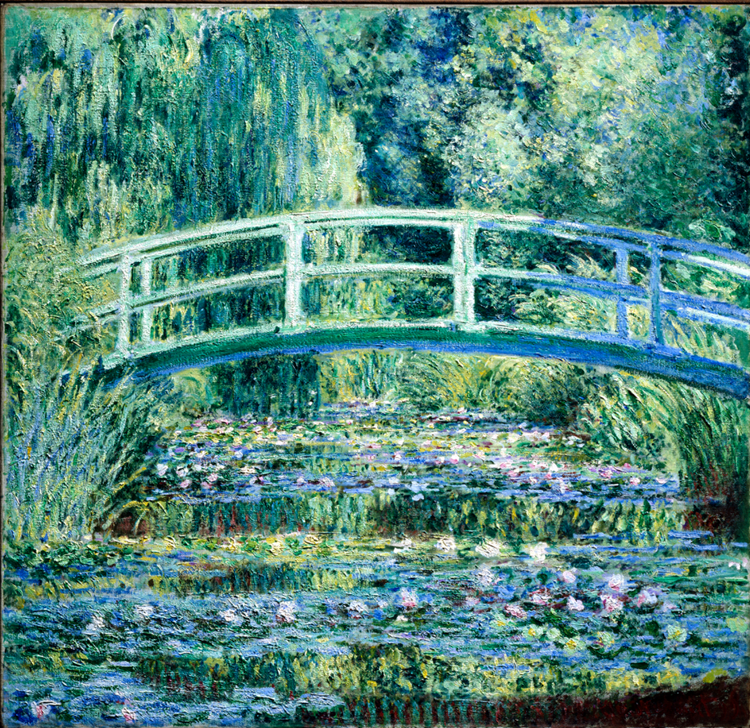Claude Monet
Claude Monet was an artist, essential to the impressionist movement. He has a unique style, repeating paintings of the same area, focusing on different things or different lights changes, these were called stacks and helped shape his style.
Monet was the oldest child of a grocer, spending much of his childhood on the Normandy coastline. His father took over the ship chandlering business, allowing Monet to gain access and knowledge to every part of the Normandy coastline, learning each detail and how nature responded. He became known for his art at 15, drawing caricatures and pencil sketches of sailing ships, both deep in details and technical understanding. As he grew up, his aunt (an amateur painter) began to train Monet. However, his final style did not begin until he met Eugène Boudin who taught Monet about the idea of painting outside of a studio. This shaped Monet’s work for the next 60 years to come, looking at how to ‘transform perception into pigment’.
Monet and Impressionism

He was essential to the impressionist movement as he created a new world of painting, instead of the traditional reconstruction of memories and sketches in a studio Monet painted in the scene itself. He inspired others to create outdoors, and movement inspired by light and colour. Monet was never one for formal training and took to working alongside or attending informal art schools to further his skill. However, even when completing military service in Africa his art was never left behind, instead a whole new skill was learnt based on new light conditions and colours in comparison to France. Large chunks of his work are thought to be based on the romanticism paintings but a more colourful, abstract alternative. Others followed his lead, creating a movement of outdoor artists capturing light in their paintings with little attention to other elements creating the slightly abstract, bright paintings we know now as the impressionist movement.
How does photography link to impressionism?
While Impressionism is an art movement, I want to replicate it to some degree within my photography project. This could be through colours and light. I like the idea of using a sunny day and slow shutter speed to create the abstract blur of colour. Composition is not the first thought in Impressionism, which is unusual for photography however I think it will be a good prompt to get me to look at photos through a further artistic lens deepening my story rather than just getting a solely good photo.
Photo analysis

A defining painting in the impressionist art movement, the vibrant greens distracting from the blurred lines, mixing colours and textures. It is striking to look at, a mixture of bright colours and slightly abstract lines. The scene is a pond Monet filled with water lilies himself, never planning on painting them. Once he felt he had completed the bridge and pond ‘build’ he was captivated by its colour and immersive capabilities of the landscape. The painting itself is a small, cropped view of the bridge and the water with the lilies, unlike other landscapes there is no sky. While it uses bright colours to capture the viewers’ attention and provide them with an immersive experience the colours are cool toned with pops of pinks and yellows. The frame is predominantly filled with the bridge in the upper third and the lilies in the foreground. With the bushes and taller plants framing the photo around the edge and background. It reminds me of a summer’s day, bright and cheerful using the slight abstract appearance, caused by blotted brush strokes, to force the viewer to look at the colour, the light. The impressionist movement was based around light and how it changes reflecting the natural world, Monet mastered this.
